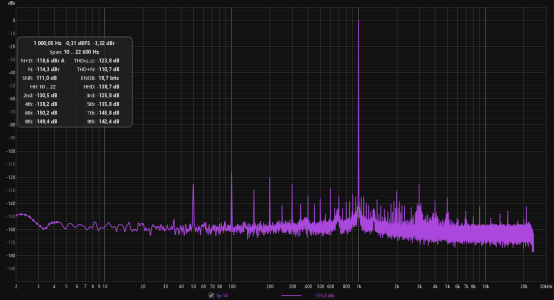If the Ultra uses ne5532 in the analog output ( as they do in the pro+ ) the CMMR are 100 dB for that circuit. Using opa1612 will give 120 dB , and those smps spikes would probably be down further 20 dB .That's the conclusion which makes me a bit nervous, as I do not know what to think about it. You would use an LPF by default when measuring some class D amps...
But on the other hand I think that this is the impact of the PSU, which is placed on the same PCB as analog outputs, and it could be reduced.
Has someone opened up the Ultra to take a look at the analog parts ?


